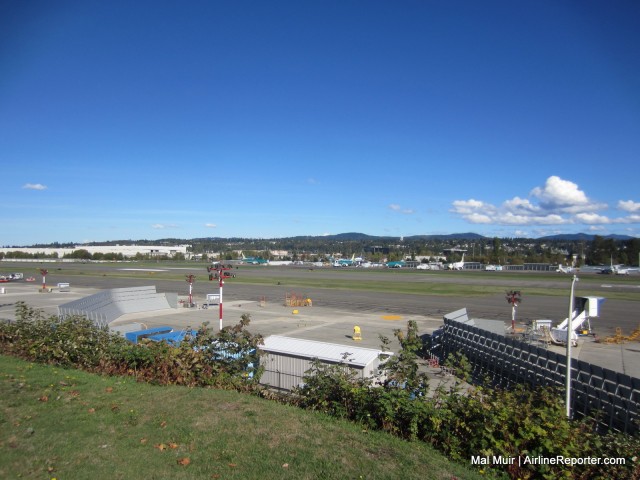
Renton Municipal Airport, home of the Boeing 737
In the past, we have featured plane spotting guides for Paine Field and also other airports like Anchorage or Tokyo Haneda. With numerous airports in the Seattle area, including SeaTac and Boeing Field, there is sometimes a forgotten, but quite important, airport for plane spotters which provides a continuous stream of aircraft to spot. I am speaking of Renton Municipal Airport, the home of Boeing’s narrow-body aircraft plant.
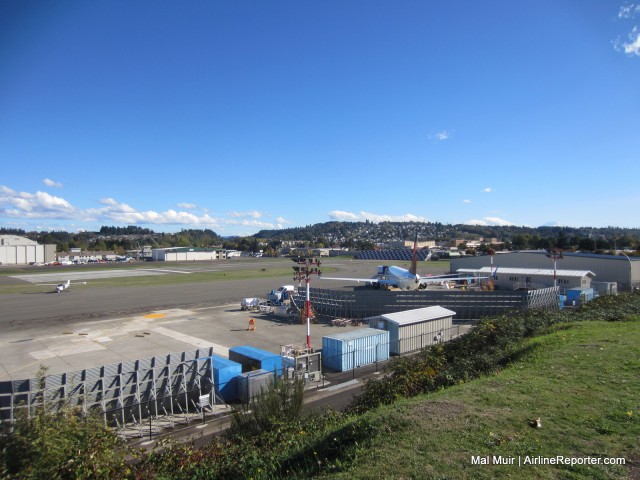
The southern threshold of Renton’s runway
The Renton Airport traces its history back to World War II. Originally built on reclaimed land from Lake Washington, the airport was built by the Department of Defense (DoD) to support Amphibious Aircraft being built by Boeing on Lake Washington. The PBB Sea Ranger project was cancelled after the prototype was built, so Boeing ended up using the facility to produce the B-29 Superfortress. By the end of the war, a total of 1,119 were built.
After the war, the City of Renton purchased the airport back from the DoD for $1 and the facility laid dormant for a few years. In 1948, the KC-97 Stratofreighter project brought the airport back to life and thus began a long and productive history of aircraft to flow out of the Boeing factory doors. The first Dash 80 aircraft, famous for the barrel roll over Lake Washington, rolled out in May 1954. Renton was the home of every single 707 built.
The 727 & 757 were all built there as well. However, Renton is famous these days for being the home of the 737, where production stands at a massive 42 aircraft per month.
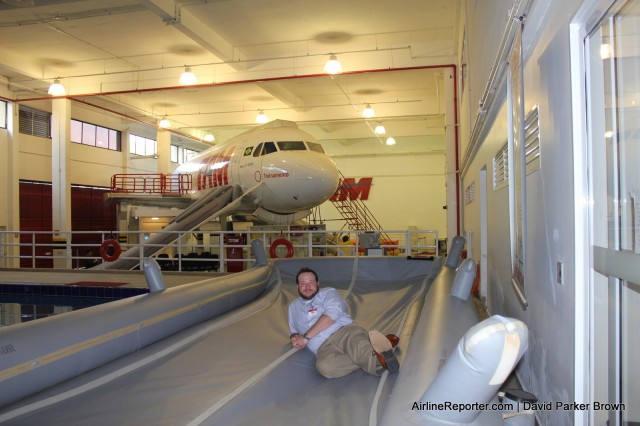
Hanging out on a safety slide next to the TAM pool. Lots of funny jokes about pushing me in.
Who flies 15,000 miles to just spend one night in a foreign country? This guy!
I was recently invited to Sao Paulo to take a look a behind the scenes look at TAM Airlines’ operations. When invited, my first thought was, “hell yes,” but once seeing that I would be flying 15,000 miles for one night in Brazil, I felt that there might be some challenges (and lack of sleep). But was it worth it? I wasn’t sure at first. So, I decided to take you behind-the-scenes of the behind-the-scenes trip — what is it like to do a media trip in such a short amount of time.

Lots of miles, lots of things to do, not a lot of sleep – Image: GCMap.com
The media schedule was cram-packed of activities and not too much time to sleep. I would fly from Seattle to New York in economy (well, premium economy on the way home), then take the red-eye on TAM from New York’s JFK to São Paulo’“Guarulhos International Airport, and then take another red eye back to the US. With such a short trip, this meant that I needed to do the best I could to rest when possible, keep hydrated, and heck, why not have some fun too.
When I take these media trips, I think most of my friends and family visualize me on the beach or next to a pool with a nice drink (probably one with an umbrella in it) and it is all wine and dine. These media trips are VERY different than that, but it doesn’t mean that I do not love them. Even though there is a lot of fun in doing them, I am on a job and doing work. Sometimes, that means pushing through when all my body wants to do is shut down. This trip put me to the test.
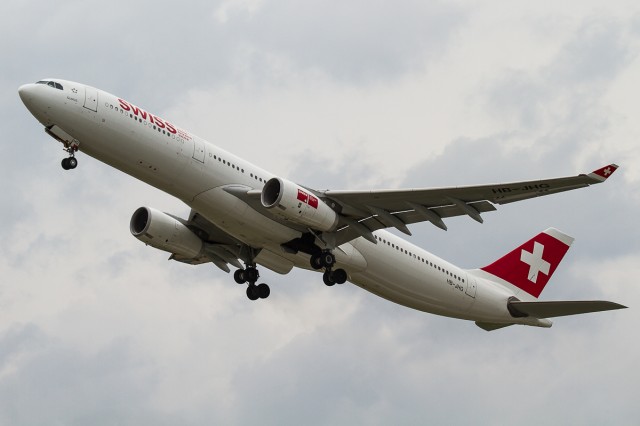
Swiss International Airlines Airbus A330-300 on departure from Zurich – Photo: Jacob Pfleger | AirlineReporter
SWISS INTERNATIONAL AIRLINES BUSINESS CLASS REVIEW BASICS:
Airline: Swiss International Airlines
Aircraft: Airbus A330-300
Departed: Zurich (ZRH)
Arrived: Chicago (ORD)
Stops: Non-stop flight
Class: Business Class
Seat: 4A
Length: About 9.5 hours
Cheers: Mini-cabin that offers additional seclusion and privacy, connection efficiency at the Zurich hub
Jeers: No hot meal offered for second service, despite nearly 10-hour flight length, aging and clunky IFE
Overall: A leading long-haul business class product from an EU carrier, needs a few updates to make it more competitive in the future

Antares explodes following a loss of thrust – Photo: NASA
The last week of October, 2014 was not a good one for commercial space flight. The week started with Orbital Sciences (OSC) attempting to launch their Antares rocket, carrying their unmanned Cygnus cargo vessel to the International Space Station. After a cancelled launch on Monday for a boat in the safety zone, the second attempt on Tuesday ended in failure.
Seven seconds after liftoff, a catastrophic failure in one or both of the engines caused the rocket to lose all thrust and fall back onto the launch pad, with a large explosion. OSC had launched the Antares four times previously with success, three of those times carrying a Cygnus craft. The company has been a major player in the spaceflight industry for over 30 years, having proven themselves with their unique Pegasus rocket, and a wide range of commercial satellites that they produce for various customers.
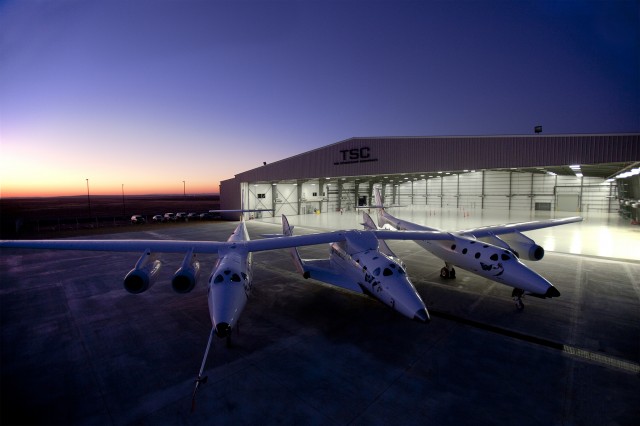
WhiteKnightTwo and SpaceShipTwo togther – Photo: Virgin Galactic
With the failure of the Antares still fresh in everyone’s mind, on the following Friday, Virgin Galactic prepared for a test flight of their private space passenger vehicle, SpaceShipTwo. Shortly after 10:00AM PST, Virgin sent out a cryptic tweet: “#SpaceShipTwo has experienced an in-flight anomaly.” That anomaly turned out to be a worst-case scenario, with the craft breaking up 55,000 ft above the Mojave Desert for still-unkown reasons. With one pilot in serious condition, the other was not as lucky. Mark Alsbury was the latest test pilot to pay the ultimate sacrifice in the pursuit of pushing aviation to the limits. Over the past 70 years, hundreds of brave pilots gave their all for the same purpose, and it has not been in vain.
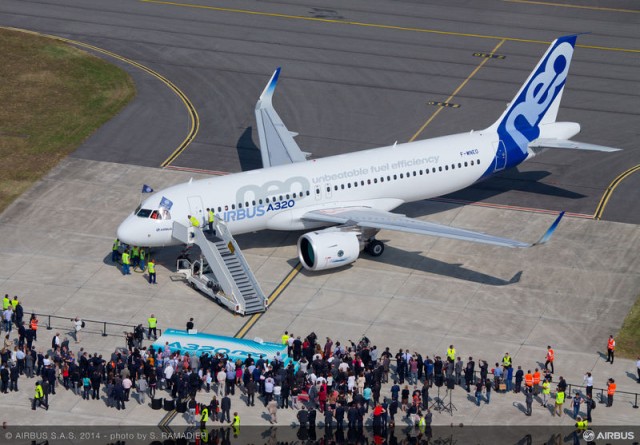
People gathered at Toulouse-Blagnac Airport on 25 September 2014 to witness the historic first “neo” flight – Photo: Airbus
Recently, Leeham News broke news to the world that Airbus is offering a new variant of the A321neo. This aircraft, dubbed the A321neoLR (rolls right off the tongue, right?) is set to extend the range of the aircraft an additional 400-500 nautical miles (nm) over the standard A321neo (now slated to be around the 4,000 nm mark). Airbus has confirmed the aircraft, according to Leeham, and they say that it will have a 100 nm range advantage over the 757-200W, the variant used primarily for trans-Atlantic flights.
Is this new aircraft the death knell finally for the 757?
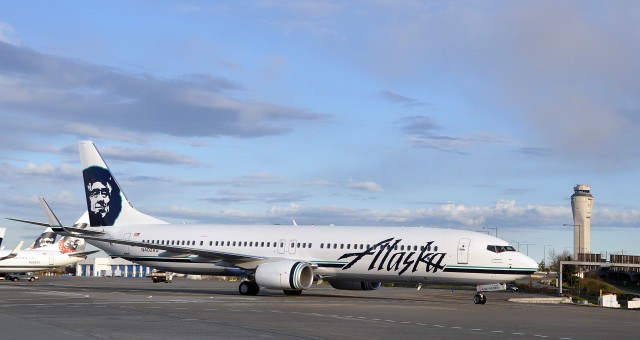
The 737-900ER is a popular choice as a longer-range aircraft to replace older 757s, but is it the right fit? Photo: Alaska Airlines
We have looked multiple times at the differences between the 757 & the A321. The two aircraft have always gone back and forth as apparent direct competitors and even the new 737-900ER, which seem to be extremely popular with airlines like Delta, Alaska or the Lion Air Group from Indonesia, can’t seem to replace the 757.
What keeps Boeing from producing a new aircraft to properly replace the 757?








